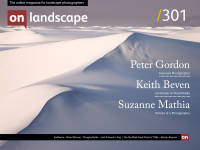Linking words and Image

Keith Beven
Keith Beven is Emeritus Professor of Hydrology at Lancaster University where he has worked for over 30 years. He has published many academic papers and books on the study and computer modelling of hydrological processes. Since the 1990s he has used mostly 120 film cameras, from 6x6 to 6x17, and more recently Fuji X cameras when travelling light. He has recently produced a second book of images of water called “Panta Rhei – Everything Flows” in support of the charity WaterAid that can be ordered from his website.
on the mountain crests
a line of wild geese
and the moon’s seal
Yosa Boson
a clear waterfall –
into the ripples fall
green pine-needles
Matsuo Bashō1
In a recent article for On Landscape (A little piece of Eden), I included three short poems about Mallerstang written during the Covid lockdown to accompany the abstract images of water. These were examples of the haiku form that originated in Japan. I am sure that many of the minimalist landscape photographers amongst you will already have looked at the application of some traditional Japanese belief frames such as Zen, concepts such as wabi sabi, and poetic forms such as the haiku, senryu, and tanka. Michael Kenna, for example, perhaps more than any other photographer, has often been linked to Zen with his photographs. There have also been a number of books describing the practice of what has been called Zen Photography, often equated with minimalism2.
We should be careful not to be too superficial here, of course, since Zen is a Japanese form of Mahayana Buddhism, originally introduced to Japan from China. It is known for its practice of meditation to obtain self-knowledge and for the ascetic and simple lifestyle of its adherents. It is much more than minimalism3, and Michael Kenna practised a minimalist approach to photography well before his many trips to Japan and Korea, having grown up in the industrial town of Widnes in Cheshire in England and been primarily influenced by the work of Bill Brandt4. It is reported that Henri Cartier-Bresson (1908-2004) was influenced by a copy of Zen and the Art of Archery that was given to him by the painter Georges Braque (1882-1963). This had been originally published in German by the philosopher Eugen Herrigel (1884 – 1955) in 1948 after he had spent a period teaching in Japan5. For those of us who were around in the 1970s, the book Zen and the Art of Motorcycle Maintenance by the American philosopher Robert Maynard Pirsig (1928 – 2017), published in 1974, was much more influential.
But perhaps the better analogy for landscape photography is with the simple poetic forms associated with Zen, such as the haiku6. In his book Forms of Japan, published in 2022, some of Michael Kenna’s photographs are printed in conjunction with some haiku by classic Japanese authors such as Bashō, Boson and Issa7, and Michael Kenna is quoted as saying, “My photos are more like haiku than prose”8

